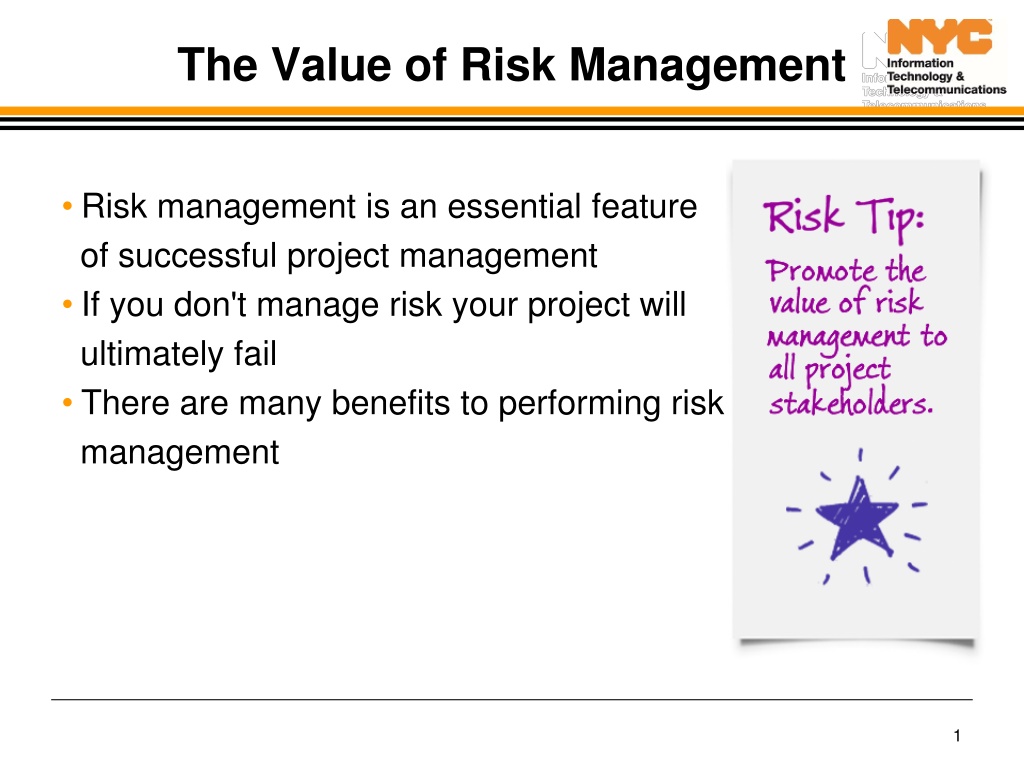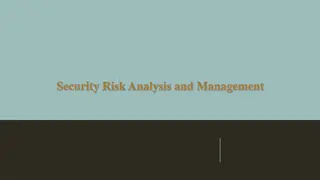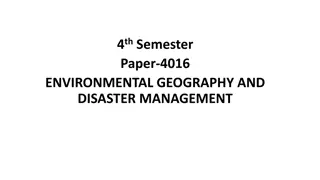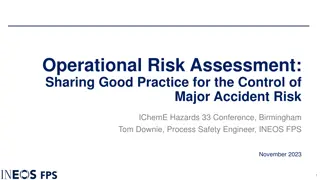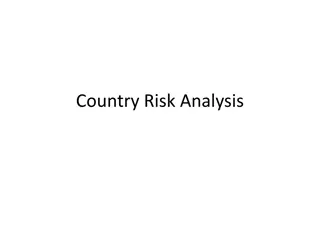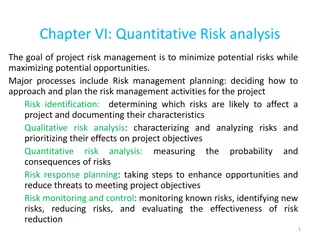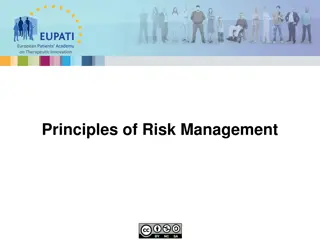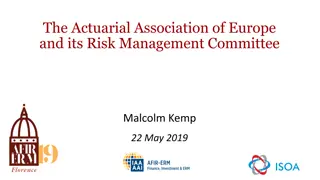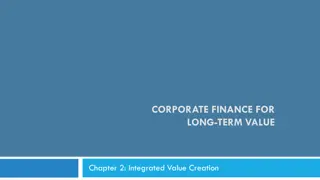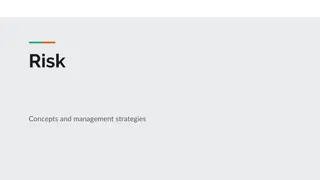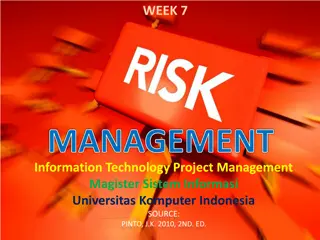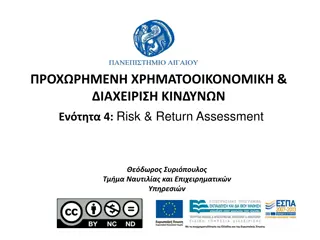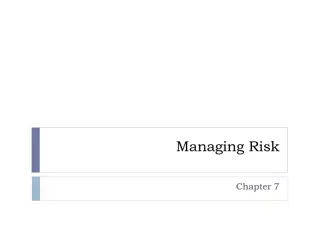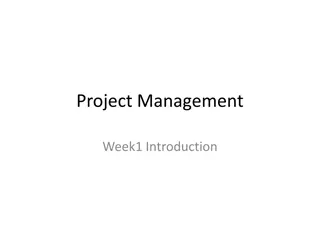The Value of Risk Management in Project Success
Risk management is crucial for project success. It involves identifying, assessing, and mitigating risks to prevent project failures. By effectively managing risks, projects can increase awareness, improve communication, identify opportunities, reduce costs, resources, and time, and protect reputation and legal liability. Assigning roles and responsibilities based on identified risks further enhances project outcomes.
Download Presentation

Please find below an Image/Link to download the presentation.
The content on the website is provided AS IS for your information and personal use only. It may not be sold, licensed, or shared on other websites without obtaining consent from the author.If you encounter any issues during the download, it is possible that the publisher has removed the file from their server.
You are allowed to download the files provided on this website for personal or commercial use, subject to the condition that they are used lawfully. All files are the property of their respective owners.
The content on the website is provided AS IS for your information and personal use only. It may not be sold, licensed, or shared on other websites without obtaining consent from the author.
E N D
Presentation Transcript
The Value of Risk Management Risk management is an essential feature of successful project management If you don't manage risk your project will ultimately fail There are many benefits to performing risk management 1
The Value of Risk Management #1 - Increases Awareness Provides an opportunity to proactively avert risks If you identify risks and how they may impact the project ahead of time, you will be prepared to implement a response plan to thwart the risk with minimal disruption to the project 2
The Value of Risk Management #2 Improves Communication You can't act on what you don't know! Promotes the frequent communication of project risks (both opportunities and threats) Encourages stakeholders and management to get involved in decision making Promotes awareness about how risks are being managed 3
The Value of Risk Management #3 Identifies Opportunities Risk management not only identifies negative risks but also positive ones It gives the project manager and team the opportunity to enhance positive risks and reap the associated benefits 4
The Value of Risk Management #4 Reduces Costs, Resources, & Time Implementing a risk response plan will save your organization time and money Unnecessary costs will be avoided, valuable resources won't be wasted and precious time won't be lost 5
The Value of Risk Management #5 - Protects Reputation & Legal Liability Having a risk response plan will minimize the damage that may be caused by a risk If a risk spins out of control, an organization's reputation may go with it Embarrassment and legal ramifications will be avoided 6
The Value of Risk Management #6 - Improves Roles & Responsibility Assignments Identifying and understanding risk provides an opportunity to assign the best person to address the risk before it arises Having the risk monitored by the most suitable person will ensure that it's responded to as soon as a trigger occurs Assigns accountability for the risk and risk response 7
The Value of Risk Management #7 Improves Reliability & Predictability Provides the project manager and team with the opportunity to avoid or mitigate risk Helps to keep your project on track so you can deliver what is required and by the due date 8
The Value of Risk Management #8 - Improves Quality & Continuous Improvement Identifies the strengths and weaknesses of an organization's processes Provides an opportunity to enhance strengths and make improvements to existing processes, policies and procedures as well as create new ones 9
The Value of Risk Management #9 - Improves Auditability & Compliance Ensures standards are adhered to and a methodology is followed Greatly increases a project s chances of meeting the defined success criteria Provides auditors with a paper trail to demonstrate that the appropriate actions were taken 10
The Value of Risk Management #10 - Improves Project Control & Transparency Provides greater control over a project Ensures risks are identified and response plans are in place ahead of time so the project team is proactive and equipped to deal with problems if/when they occur Reduces the likelihood of issues arising Allows for greater transparency and understanding of roles and responsibilities Creates a more cohesive, collaborative and productive project team 11
